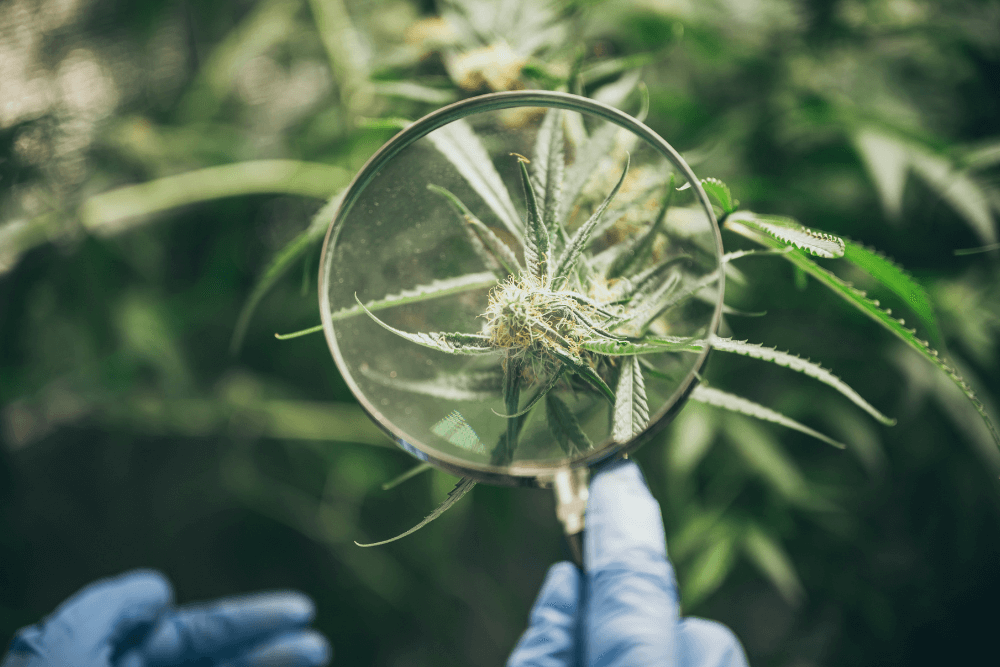The nutritional demands of cannabis are still not well understood. Due to the legal status of the plant, intense studies on cannabis nutrition have been limited. The subtleties of plant nutrition are not well understood, particularly in cannabis. Nickel was not recognized as a plant essential nutrient until 2004. The presence of a single micronutrient deficiency can decrease the production of fruit and some flowers in excess up 30%.
The Presence of Physical Symptoms
The physical symptoms of plant deficiencies and toxicities typically don’t manifest from anywhere between three and nine weeks. Usually, by the time these physical symptoms appear visually, the damage has already begun to occur. Physical symptoms of plant nutrition vary considerably and there’s substantial overlap between the visual characteristics of symptoms. Nutritional deficiencies can sometimes be caused by the toxicity of another element. For example, an excess of magnesium can inhibit the plants’ ability to uptake calcium.
The Importance of Soil and Growing Media
The soil/growing media used during the cultivation process can impact nutrient absorption in several ways, primarily depending on its physical and chemical characteristics. Cannabis prefers well-draining media with a pH range of 5.8-6.2. The pH of the media itself can enhance or reduce the plants’ ability to absorb certain nutrients. For example, iron becomes decreasingly soluble at higher pH levels. The drainage of the media is highly dependent on the growing style and environment, but generally, a well-draining growing media allows for healthy roots and maximum nutrient absorption. The media acts as a sort of nutrient reservoir for the plant’s roots.
Leaf Tissue Analysis
Leaf tissue analysis has been a long-utilized tool in traditional agriculture. Its presence in cannabis is limited primarily due to the long-standing illegality of the plant. However, there has been major interest recently in using this tool in cannabis cultivation. The basic premise is that fan leaves are removed from the plant, dried to completion, and analyzed at an analytical laboratory for primary, secondary, and micronutrients. One of the main advantages of this is the guesswork is taken out of the identification of the toxicity or deficiency. Visual symptoms of toxicities and deficiencies can have overlapping visual cues. The nutritional issues may be far more complex than an issue with a single element. By having empirical data, it allows the cultivator to compare the analytical results to established target values. From there, the cultivator can adjust the fertilization program to mitigate any potential toxicities or deficiencies. Regular monitoring of nutrient levels allows for proactive adjustments of the fertilization program. This, in turn, can lead to optimization of quality and yield.
Fertilizer
Fertilization is one of the most important aspects of any cultivation. A dialed in nutrient program optimizes the speed of growth, quality of the product, and overall yields. Fertilization can be a complex puzzle and no two cultivators grow in the exact same way. By analyzing the fertilizer, nutrient solution, plant tissue, water, and growing media the cultivator can trace back to the source of any potential issue. A common issue in cannabis cultivation is iron deficiency, this can be caused by an excess of manganese as cannabis will selectively absorb manganese over iron. The iron levels may be completely sufficient in the nutrient solution, but the excess manganese mitigates absorption. A typical response to an iron deficiency would be to add more iron, by using plant tissue and nutrient data, it can be discerned that the solution to the problem is a reduction in manganese and not the addition of more iron.
Water
Water quality is one of the foundations to successful cannabis cultivation. Testing water prior to planting and throughout the growing season can help prevent issues before they occur. If the source water for the nutrient solution originates from a well, it is important to understand the mineral content of the water so that fertilization can be adjusted accordingly. If the water is filtered, it is a useful tool to monitor the life of the filters. As reverse osmosis (the most common type of filtration used in cannabis cultivation) filters age, the boron concentration in the filtered water begins to rise considerably. In addition to this, the presence of excess chlorine or chloramine can create issues with nutrient absorption.
Environmental Conditions
Environmental conditions play a significant role in nutrient absorption and overall plant health. Nutrient levels can be optimized in the fertilizer solution, but environmental effects can prevent optimized nutrient absorption. Humidity, temperature, light, CO2, etc. can all greatly impact the plants’ ability to uptake nutrients. Optimization of these conditions is critical to a successful cultivation.
Conclusion
While the nutritional demands of cannabis are still not fully understood, leaf tissue, water, soil, and fertilizer analysis can assist immensely in the identification and mitigation of nutritional deficiencies and toxicities. These tools allow cultivators to make data driven decisions and prevent issues before they occur. Optimizing nutritional levels in cannabis maximizes the quality and yield of the plants.



Follow NCIA
Newsletter
Facebook
Twitter
LinkedIn
Instagram
–